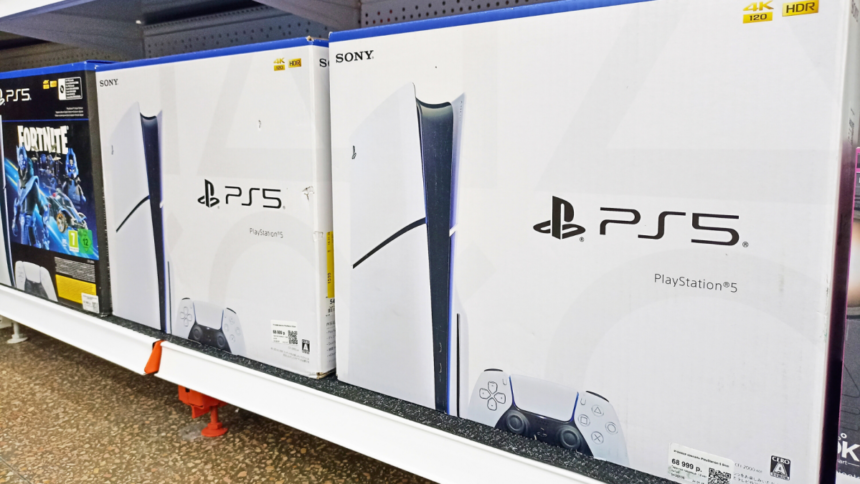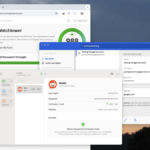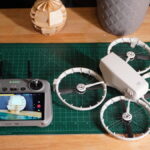The True Cost of Tariffs: How Consumers Are Affected
The narrative presented by the White House doesn’t align with the reality that consumers are bearing the financial burden of these tariffs. Numerous businesses across various sectors have halted sales or increased prices in recent weeks, contributing to an ongoing state of uncertainty.
The dynamic surrounding tariffs is particularly erratic. President Donald Trump has consistently hiked tariffs, especially on China, with rates soaring up to 145%. The administration subsequently struck a deal with China to postpone many tariffs until August, yet several persist. As a result, companies are racing to devise strategies to safeguard their profits, often leading to increased prices as part of their response.
The gaming industry is not immune to these trends. Numerous gaming firms source components from China, making their products subject to tariffs upon entering the U.S. Below is a snapshot of how some leading gaming companies are navigating this landscape.
Microsoft
Xboxes are evidently becoming more valuable. As of May 1, Microsoft decided to increase the prices of all Xbox consoles, alongside various accessories like controllers and headsets. The price jumps are significant: both the standard and digital Series X models saw an increase of $100, while the 2TB version incurred a substantial hike of $130. To illustrate, a Series X with 2TB of storage that cost $600 on April 30 now runs $730.
Video games are also feeling the impact of this pricing strategy. Fortunately, existing titles will maintain their previous MSRP, while selected new releases will debut at $80 this holiday season.
While Microsoft does not explicitly link these price increases to tariffs, attributing them instead to “market dynamics and rising development costs,” it can reasonably be inferred that the import fees are influencing their pricing decisions.
Sony
Sony has also implemented price increases for its primary consoles, but only in select regions.
They’ve raised prices on specific PS5 models in Europe, the UK, Australia, and New Zealand. The adjustments vary by location; for instance, the PS5 Digital Edition increased by €50 in Europe, while models in Australia and New Zealand saw rises across the board. New Zealand now has the highest MSRP at NZD $949.95 (approximately $560 USD).
In the U.S., consumers shouldn’t expect immunity from potential PS5 price hikes. Reports indicate that Sony anticipates tariffs to impose a financial hit of 100 billion yen ($681 million) and is contemplating relocating manufacturing to the U.S. or raising consumer prices.
Being a substantial enterprise, any price adjustments may extend beyond just the PS5, leaving open the possibility of future price hikes across their product lines.
Nintendo
The silver lining comes from Nintendo, which has chosen not to increase the MSRP of the Switch 2 or any existing Switch models. The Switch 2 remains priced at $450, or $500 if bundled with Mario Kart World.
However, Nintendo has still responded to the tariff situation in other ways. They have paused preorders for the Switch 2 in the U.S. and Canada to evaluate the impact of tariffs and fluctuating market conditions. While it’s fortunate the Switch price remains unchanged, the company did announce price hikes for some Switch 2 accessories.
The Pro Controller is now offered at an additional $15, and the Joy-Con 2 controllers have risen by $5, culminating in a staggering price of $95. Furthermore, the Switch 2 camera is priced at $55 instead of the original $50. The remaining Switch 2 accessories, however, retain their previous prices.
PC Gaming
PC gaming presents a more intricate scenario than its console counterpart. Unless individuals opt for gaming laptops, most typically choose to build their PCs, necessitating the purchase of several parts, many of which are produced in China. Fortunately, complete computers, phones, and PC cases have been exempt from the 145% tariff, albeit other components have not.
As reported by PCMag, the impact of tariffs on most PC parts has been moderate thus far, at least concerning April’s prices. The analysis revealed minor increases in PC cases, processors, and memory kits (ranging from $3 to $15), while a liquid cooler surprisingly decreased by $60.
However, one critical component—graphics cards—has seen a notable price surge. For example, the MSI SHADOW GeForce RTX 5070 Ti transitioned from $750 in January to $840 by April, marking a $90 increase. Similar patterns were identified across various popular graphics cards, showing price jumps from $250 up to $750.
Demand for graphics cards had already been intense prior to the current tariffs, primarily due to their role in AI processing growth. The new tariffs only add to the pressure on this product segment.
Gaming laptops have largely escaped severe pricing effects, although Razer was among the companies to suspend direct sales to the U.S. last month.
The Future is Uncertain
This is the current landscape, but the situation could shift dramatically in the next few days, weeks, or months. Sony might decide to increase PS5 prices in the U.S. tomorrow, or Nintendo may feel compelled to adjust the price of the original Switch.
While uncertainty looms, a reasonable assumption can be made: the prices seen today might be the most favorable for quite some time. If waiting for a price reduction on the Xbox Series X or hoping that Mario Kart World won’t debut at $80 is the strategy, disappointment may ensue.
While anything can happen, given the current state of tariffs and global market trends, it appears that prices are more likely to increase. Holding steady may be the best outcome unless venturing into the secondhand market is an option.












